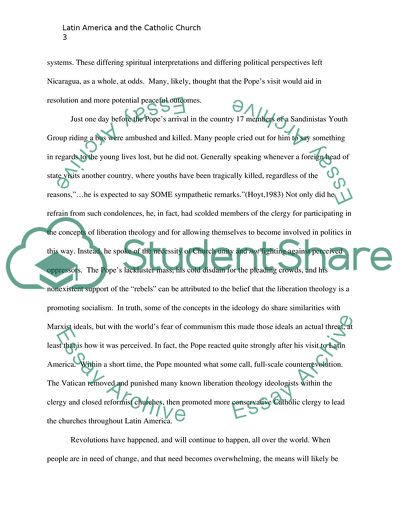Latin America and the Catholic Church Case Study - 2. Retrieved from https://studentshare.org/history/1601616-latin-america-and-the-catholic-church
Latin America and the Catholic Church Case Study - 2. https://studentshare.org/history/1601616-latin-america-and-the-catholic-church.


